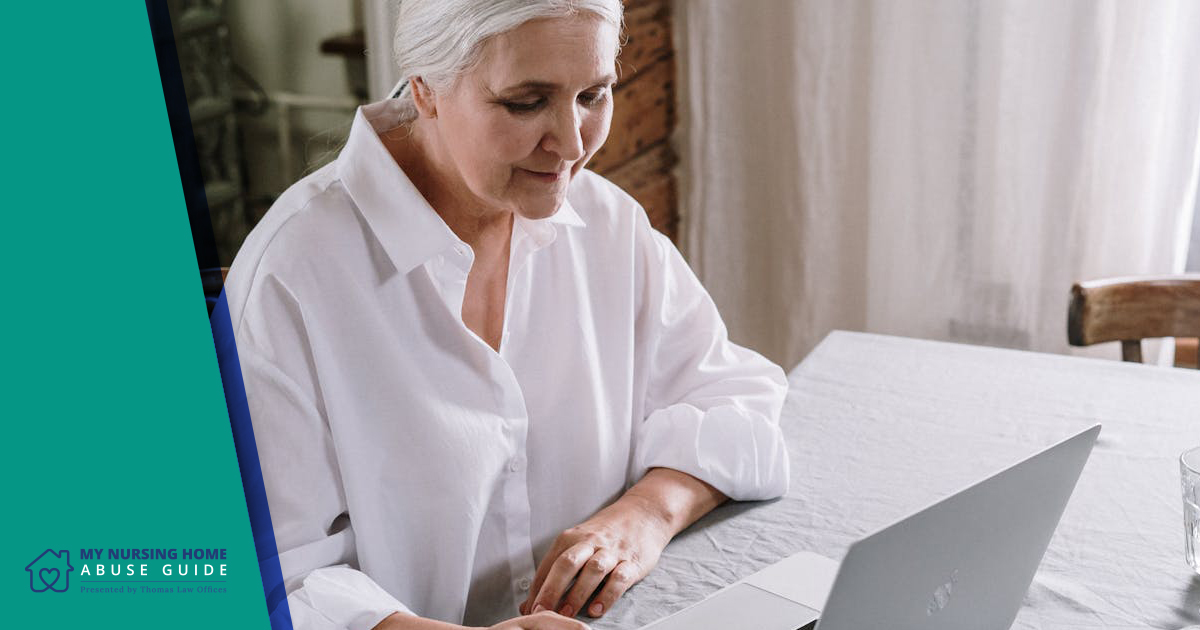Your Guide to Nursing Home Abuse & Prevention
Millions of elderly adults live in nursing home facilities.
Every one of them deserves to feel safe, protected, and respected.
Millions of elderly adults live in nursing home facilities.
Every one of them deserves to feel safe, protected, and respected.

Thomas Law Offices founder, Tad Thomas, recently authored an op-ed published in Mealey’s, urging families to recognize the signs of nursing home abuse. In his piece, he highlights the systemic issues within these facilities that allow neglect and abuse to persist. Read it here:
By Tad Thomas
The federal government recently established mandatory minimum staffing levels for nursing homes to improve care for families and support caseworkers. Under these new guidelines, nursing facilities must maintain a baseline of registered nurses and nurse assistants in order to address the crisis of nursing homes being chronically understaffed, leading to less than adequate care.
Ultimately, this move exposes what we have known all along – our loved ones in nursing homes experience far too much neglect, poor staffing, and abuse. These facilities are expected to provide long-term care, but too often residents face mistreatment due to systemic issues such as understaffing, poor training, and severe underfunding per resident.
Unfortunately, elder abuse and neglect in these homes are alarmingly common. According to the World Health Organization’s 2022 report, two out of three nursing home staff members admitted to perpetrating abuse over a year. These disturbing statistics highlight the suffering faced by many vulnerable individuals.
As an advocate for residents of nursing homes, I have seen countless instances of neglect and abuse first- hand. Unfortunately, too many Americans struggle to find nursing homes that provide adequate care for their loved ones.
For instance, a woman I represented, Barbara, was admitted to a nursing home in 2017 with a history of dysphagia, which affected her ability to chew and swallow properly. Despite the nursing home’s aware- ness of her condition, she choked on a sandwich that was not part of her approved diet, leading to her untimely death. This was not an isolated incident in this nursing home, where there had previously been similar issues with neglect. This was a culmination of failures by the nursing home to provide necessary care and supervision.
Nursing homes receive nearly $100 billion annually from American taxpayers, yet too many facilities are understaffed, underpaid, and lack proper training, resulting in accidents and deaths. Barbara’s case, like many others, highlights systemic issues within nursing homes, including inadequate staffing, insufficient training, and lack of adherence to care plans. These failures not only violate professional and ethical standards, but also show a disregard for the safety measures owed to residents.
Even with these new guidelines, families are still the first line of defense in recognizing signs of abuse, neglect, and mistreatment toward their family members and loved ones. It is vital to recognize and understand the signs of mistreatment to prevent it and protect our loved ones. These signs can include unexplained bruises or injuries, sudden weight loss, changes in behavior, poor hygiene, and financial issues. The most important thing is to never ignore the signs of abuse or neglect. A family member’s best defense against months or even years of abusive treatment and suffering is to pay attention. Regular visits and open communication with both residents and staff can help identify problems early. Listening to complaints and concerns is key.
When selecting a nursing home, families should thoroughly research potential facilities. This includes looking into the services they provide, visiting the facility, and talking to other residents and their families. Even with diligent research, abuse and neglect can occur, so continued vigilance is necessary. Be- yond checking on the amenities they provide, consult friends and family, look at reviews, and if your loved ones say something, listen to them.
While there is no single solution to prevent nursing home neglect, one approach is clear: hold violators accountable so they make real changes at their facilities. No one should have to settle for poor quality care for their loved ones.
One of the most important things we can do is to visit frequently. If that is not possible due to travel time, work, or other commitments, consider having someone else visit the nursing home regularly or do a video call with your family member. This way, you can stay updated on the care your loved one is receiving and monitor their health and happiness.
Additionally, we must continue advocating for stronger regulations, raising awareness, and providing resources to address the issues that plague long-term care facilities. The regulations established by the Biden Administration are a good first step, but they only represent the minimum standard for elderly care. We need to advocate for stronger regulations, holding individuals accountable, raising awareness, and providing resources to address the systemic issues that plague long-term care facilities. Our elderly loved ones deserve to live their final years with respect, dignity, and the highest standards of care. While there is no single solution, by listening and caring for them, we take a step in the right direction.
This website was created and is maintained by the legal team at Thomas Law Offices. Our attorneys are experienced in a wide variety of nursing home abuse and neglect cases and represent clients on a nationwide level. Call us or fill out the form to the right to tell us about your potential case. We will get back to you as quickly as possible.
866-351-2504